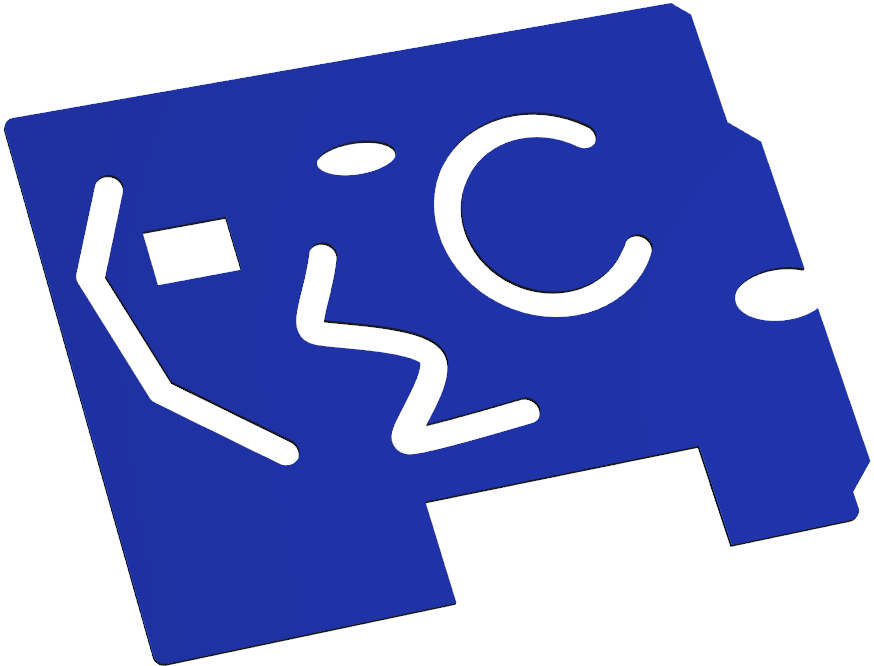
PCB Border With Cutouts
PCB cutouts are openings or voids created in a printed circuit board (PCB) design to accommodate specific components, features, or mechanical requirements. They can serve various purposes and are an essential aspect of PCB layout and design. Here’s a detailed overview of PCB cutouts:
Purpose of PCB Cutouts
•PCB cutoutsare openings or voids created in a printed circuit board (PCB) design to accommodate specific components, features, or mechanical requirements. They can serve various purposes and are an essential aspect of PCB layout and design. Here’s a detailed overview of PCB cutouts:
•Component Accommodation: Cutouts can provide space for components that protrude from the board, such as connectors, switches, or other hardware that may require additional room.
•Weight Reduction: By removing material from the PCB, cutouts can help reduce the overall weight of the board, which is especially important in portable or lightweight electronic devices.
•Thermal Management: Cutouts can enhance airflow around components that generate heat, improving thermal dissipation and helping to prevent overheating.
•Routing Flexibility: Creating cutouts can allow for more flexible routing of traces and components by providing additional space and reducing congestion in certain areas.
•Mounting Features: Cutouts can be used to create mounting holes or slots for attaching the PCB to a chassis, case, or other mechanical structures.
•Design Aesthetics: In some cases, cutouts are used for aesthetic purposes, allowing for a more visually appealing design or branding opportunities.
Types of PCB Cutouts
•Component Cutouts: These are designed specifically to accommodate the dimensions and shape of components, ensuring that they fit properly without interfering with other parts of the PCB.
•Access Cutouts: These cutouts provide access to connectors, switches, or other interfaces located on the board, allowing for easier user interaction.
•Weight Reduction Cutouts: Strategically placed cutouts can be used to lighten the PCB while maintaining structural integrity, especially in applications where weight is a critical factor.
•Ventilation Cutouts: These are used to enhance airflow around heat-generating components, helping to dissipate heat more effectively.
•Mounting Cutouts: These openings allow for screws, bolts, or other fasteners to secure the PCB within an enclosure or assembly.
Design Considerations for PCB Cutouts
•Size and Shape: The dimensions and shape of cutouts should be carefully designed to fit the specific components or mounting requirements while maintaining the integrity of the PCB.
•Clearance: Ensure that cutouts provide adequate clearance around components and traces to prevent shorts or damage during assembly and operation.
•Placement: Position cutouts strategically to minimize their impact on routing and component placement, ensuring that they do not interfere with other critical features of the design.
•Mechanical Integrity: Consider the structural integrity of the PCB when designing cutouts. Ensure that cutouts do not compromise the board's strength or flexibility.
•Manufacturing Capabilities: Communicate with the PCB manufacturer regarding cutout specifications to ensure they can accommodate the desired shapes and sizes during production.
Best Practices for Implementing PCB Cutouts
•Utilize Design Software Tools: Use PCB design software tools to accurately define and place cutouts within the design, ensuring they meet the required specifications.
•Test Prototypes: If possible, prototype PCBs with cutouts to verify fit and function before full-scale production.
•Document Cutout Specifications: Clearly document the dimensions, locations, and purposes of cutouts in the design files to facilitate communication with the manufacturer.
•Perform Design Rule Checks (DRC): Use DRC in your PCB design software to verify that cutouts do not conflict with other design features or violate manufacturing guidelines.
Summary
PCB cutouts are essential features in PCB design that serve various purposes, including component accommodation, weight reduction, thermal management, and mechanical mounting. By carefully considering the design and implementation of cutouts, engineers can enhance the performance, reliability, and manufacturability of electronic devices. Proper planning, testing, and adherence to best practices can help ensure that cutouts effectively meet the requirements of the overall design.